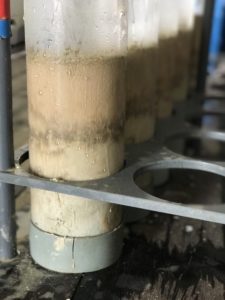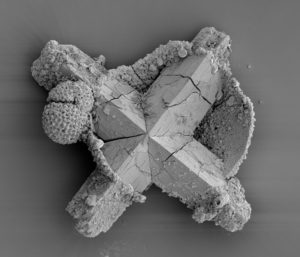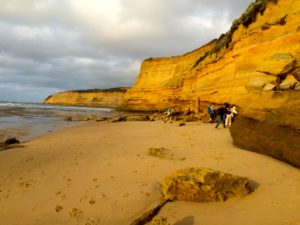Projects
Projects
Overview
The MUDPIT lab focuses on geochemistry and paleoceanography of marine sediment to investigate three primary themes.

Metals on the Abyssal Seafloor
Modern technologies require various metals. Several of the metals critical to modern technologies become concentrated in nodules or sediment on the seafloor through a fascinating interplay of chemical and oceanic processes. Where did the metals on the remote seafloor come from? How did they come to be concentrated on the seafloor? What is the concentration and distribution of each metal across the entire seafloor? These questions motivate several of the projects in the MUDPIT lab utilizing element concentrations, isotope compositions, multivariate statistical modeling, and geospatial machine learning techniques.
Understanding changes in metal cycling in seawater and sediment over time also provides environmental context for the long-term evolution of ocean ecosystems and the Earth’s carbon cycle. The availability of certain trace metals (e.g., iron, cobalt, or other) in surface waters limits the amount of photosynthesis that can draw CO2 out of the atmosphere. Research on the metal cycling in the ocean also helps understand how marine ecosystems have evolved in response to their environmental changes.
Related Publication
-
- Dunlea, A. G.*, L. A. Tegler*, B. Peucker-Ehrenbrink, A. D. Anbar, S. J. Romaniello, T. J. Horner, (2021) Pelagic clays as archives of marine iron-isotope chemistry. Chemical Geology, 575, 12020. doi: 10.1016/j.chemgeo.2021.120201
*First and second authors contributed equally.
-
- Dunlea, A. G., R. W. Murray, J. Sauvage, R. A. Pockalny, A. J. Spivack, R. N. Harris, and S. D'Hondt (2015) Cobalt-based age models of pelagic clay in the South Pacific Gyre. Geochemistry, Geophysics, Geosystems, 16, 2694-2710. doi: 10.1002/2015GC005892

Reverse Weathering and Paleoclimate
While there is strong evidence that atmospheric CO2 decreased and the Earth cooled over the past 50 million years, the mechanism driving this trend is still not well understood. A few hypotheses invoke an increase in silicate weathering, changes in weatherability, and/or a decline in volcanic outgassing. PI Dunlea proposed that a decrease in the global rate of clay mineral formation on or in the seafloor (i.e., reverse weathering) could cause the same trend. First described in the 1960s, the reverse weathering reaction takes up cations from the ocean into authigenic clay minerals on the seafloor, simultaneously converting alkalinity to carbon dioxide. While authigenic clay minerals – the products of reverse weathering – have been observed widely, it is exceedingly difficult to quantify the cations in authigenic clays that were taken up from seawater separate from the cations supplied by dust or volcanic ash. The magnitude of the reverse weathering sink for major cations in the ocean has remained almost completely unconstrained.
The MUDPIT lab is keen on investigating marine sediment samples for evidence that authigenic clays have taken up cations from seawater. We use a combination of element concentrations, isotope compositions, and multivariate statistical modeling to unravel the origin of the marine sediment and assess how it has chemically changed since it was deposited on the seafloor.
Related Publication
-
- Dunlea, A. G., R. W. Murray, D. P. Santiago Ramos, and J. A. Higgins (2017) Cenozoic global cooling and increased seawater Mg/Ca via reduced reverse weathering. Nature Communications, 8, doi:10.1038/s41467-017-00853-5

Fluxes of Volcanic Ash and Dust
Dust and volcanic ash can play a critical role in the climate system by changing surface/planetary albedo, acting as cloud condensation nuclei, and enhancing biological productivity in certain ocean regions. The MUDPIT lab reconstructs how much dust and volcanic ash was blown out to sea by looking at the marine sediment record. Our multivariate statistical approaches are able to differentiate the amount of dust deposited versus the amount of “crypto-tephra” – invisible volcanic ash that has been altered and mixed with other sediment components. The records of changing dust reveal how arid a continent was or how windy it was in the past. Volcanic ash records produce a history of volcanic eruptions.
Related Publication
-
- Dunlea, A. G., R. W. Murray, J. Sauvage, A. J. Spivack, R. N. Harris, and S. D'Hondt (2015) Dust, volcanic ash, and the evolution of the South Pacific Gyre through the Cenozoic. Paleoceanography, 30, 1078-1099. doi: 10.1002/2015PA002829
